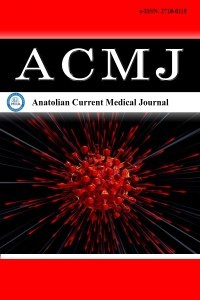1.
Saeedi P, Petersohn I, Salpea P, et al. Global and regional diabetesprevalence estimates for 2019 and projections for 2030 and 2045:results from the International Diabetes Federation DiabetesAtlas. Diabetes Res Clin Pract. 2019;157:107843.
2.
Landau Z, Pinhas-Hamiel O. Attention deficit/hyperactivity,the metabolic syndrome, and type 2 diabetes. Curr Diab Rep.2019;19(8):46.
3.
Matthews M, Nigg JT, Fair DA. Attention deficit hyperactivitydisorder. Curr Top Behav Neurosci. 2014;16:235-266.
4.
Faraone SV, Doyle AE. Genetic influences on attention deficithyperactivity disorder. Curr Psychiatry Rep. 2000;2(2):143-146.
5.
Florez JC, Hirschhorn J, Altshuler D. The inherited basis ofdiabetes mellitus: implications for the genetic analysis of complextraits. Annu Rev Genomics Hum Genet. 2003;4(1):257-291.
6.
Song P, Zha M, Yang Q, Zhang Y, Li X, Rudan I. The prevalence ofadult attention-deficit hyperactivity disorder: a global systematicreview and meta-analysis. J Glob Health. 2021;11:04009. doi:10.7189/jogh.11.04009.
7.
Fayyad J, De Graaf R, Kessler R, et al. Cross-national prevalenceand correlates of adult attention-deficit hyperactivity disorder. BrJ Psychiatry. 2007;190(5):402-409.
8.
Tannock R. Rethinking ADHD and LD in DSM-5: proposedchanges in diagnostic criteria. J Learn Disabil. 2013;46(1):5-25.
9.
Arnsten AF. Fundamentals of attention-deficit/hyperactivitydisorder: circuits and pathways. J Clin Psychiatry. 2006;67(Suppl8):7-12.
10.
Robbins TW. Chemistry of the mind: neurochemical modulationof prefrontal cortical function. J Comp Neurol. 2005;493(1):140-146.
11.
Pérez-Taboada I, Alberquilla S, Martín ED, et al. Diabetescauses dysfunctional dopamine neurotransmission favoringnigrostriatal degeneration in mice. Mov Disord. 2020;35(9):1636-1648.
12.
Hansen F, Pandolfo P, Galland F, et al. Methylglyoxal can mediatebehavioral and neurochemical alterations in rat brains. PhysiolBehav. 2016;164(Pt A):93-101.
13.
Akhter F, Chen D, Akhter A, et al. High dietary advancedglycation end products impair mitochondrial and cognitivefunction. J Alzheimers Dis. 2020;76(1):165-178.
14.
Pignalosa FC, Desiderio A, Mirra P, et al. Diabetes andcognitive impairment: a role for glucotoxicity and dopaminergicdysfunction. Int J Mol Sci. 2021;22(22):12366.
15.
Barzilay JI, Lovato JF, Murray AM, et al. Albuminuria andcognitive decline in people with diabetes and normal renalfunction. Clin J Am Soc Nephrol. 2013;8(11):1907-1914.
16.
Xu Y, Bao L, Liu C. The relationship between blood lipid andattention-deficit/hyperactivity disorder (ADHD) in an obesepopulation of Chinese children: an obesity-stratified cross-sectional study. Int J Gen Med. 2021;14:10503-10509.
17.
Chen MH, Pan TL, Hsu JW, et al. Risk of type 2 diabetes inadolescents and young adults with attention-deficit/hyperactivitydisorder: a nationwide longitudinal study. J Clin Psychiatry.2018;79(3):17m11607.
18.
Kapellen TM, Reimann R, Kiess W, Kostev K. Prevalence ofmedically treated children with ADHD and type 1 diabetes inGermany - analysis of two representative databases. J PediatrEndocrinol Metab. 2016;29(11):1293-1297.
19.
Butwicka A, Frisén L, Almqvist C, Zethelius B, Lichtenstein P.Risks of psychiatric disorders and suicide attempts in childrenand adolescents with type 1 diabetes: a population-basedcohort study [published correction appears in Diabetes Care.2016;39(3):495]. Diabetes Care. 2015;38(3):453-459.
20.
Hilgard D, Konrad K, Meusers M, et al. Comorbidity of attentiondeficit hyperactivity disorder and type 1 diabetes in childrenand adolescents: analysis based on the multicentre DPVregistry. Pediatr Diabetes. 2017;18(8):706-713.
21.
Hsu JL, Chen YL, Leu JG, et al. Microstructural white matterabnormalities in type 2 diabetes mellitus: a diffusion tensorimaging study. Neuroimage. 2012;59(2):1098-1105.
22.
Novak V, Last D, Alsop DC, et al. Cerebral blood flow velocityand periventricular white matter hyperintensities in type 2diabetes. Diabetes Care. 2006;29(7):1529-1534.
23.
Grundy SM, Cleeman JI, Daniels SR, et al. Diagnosis andmanagement of the metabolic syndrome: an American HeartAssociation/National Heart, Lung, and Blood Institute ScientificStatement. Circulation. 2005;112(17):e297.
24.
Doğan S, Öncü B, Varol Saraçoğlu G, Küçükgöncü S. Erişkindikkat eksikliği hiperaktivite bozukluğu kendi bildirim ölçeği(ASRS-v1. 1): Türkçe formunun geçerlilik ve güvenilirliği.Anadolu Psikiyatri Derg. 2009;10(2):77-87.
25.
Pazvantoğlu O, Akbaş S, Sarısoy G, Baykal S, Zabun Korkmaz I,Bekiroğlu K. DEHB tanılı çocukların ebeveynlerinde DEHB ileilişkili bazı sorunlu yaşam olayları. Düşünen Adam. 2014;27:61-68.
26.
Chen Q, Hartman CA, Haavik J, et al. Common psychiatric andmetabolic comorbidity of adult attention-deficit/hyperactivitydisorder: a population-based cross-sectional study. PLoS One.2018;13(9):e0204516.
27.
Xu G, Liu B, Yang W, Snetselaar LG, Jing J. Association ofattention-deficit/hyperactivity disorder with diabetes mellitus inUS adults. J Diabetes. 2021;13(4):299-306.
28.
Xie XN, Lei X, Xiao CY, Li YM, Lei XY. Association betweentype 1 diabetes and neurodevelopmental disorders in childrenand adolescents: a systematic review and meta-analysis. FrontPsychiatry. 2022;13:982696.
29.
Vinker-Shuster M, Eldor R, Green I, Golan-Cohen A, Manor I,Merzon E. Glycemic control and diabetes related complicationsin adults with type 1 diabetes mellitus and ADHD. J Atten Disord.2022;26(9):1235-1244.
30.
Li L, Chang Z, Sun J, et al. Attention-deficit/hyperactivitydisorder as a risk factor for cardiovascular diseases: a nationwidepopulation-based cohort study. World Psychiatry. 2022;21(3):452-459.
31.
Kannel WB, McGee DL. Diabetes and cardiovascular risk factors:the Framingham study. Circulation. 1979;59(1):8-13.
32.
Ranasinghe P, Mathangasinghe Y, Jayawardena R, Hills AP, MisraA. Prevalence and trends of metabolic syndrome among adults inthe asia-pacific region: a systematic review. BMC Public Health.2017;17(1):101.
33.
Tan MC, Ng OC, Wong TW, Joseph A, Chan Y, Hejar A.Prevalence of metabolic syndrome in type 2 diabetic patients:a comparative study using WHO, NCEP ATP III, IDF andharmonized definitions. Health. 2013;5(10):1689-1696.
34.
Pambianco G, Costacou T, Orchard TJ. The prediction of majoroutcomes of type 1 diabetes: a 12-year prospective evaluationof three separate definitions of the metabolic syndrome andtheir components and estimated glucose disposal rate: thePittsburgh Epidemiology of Diabetes Complications Studyexperience. Diabetes Care. 2007;30(5):1248-1254.

